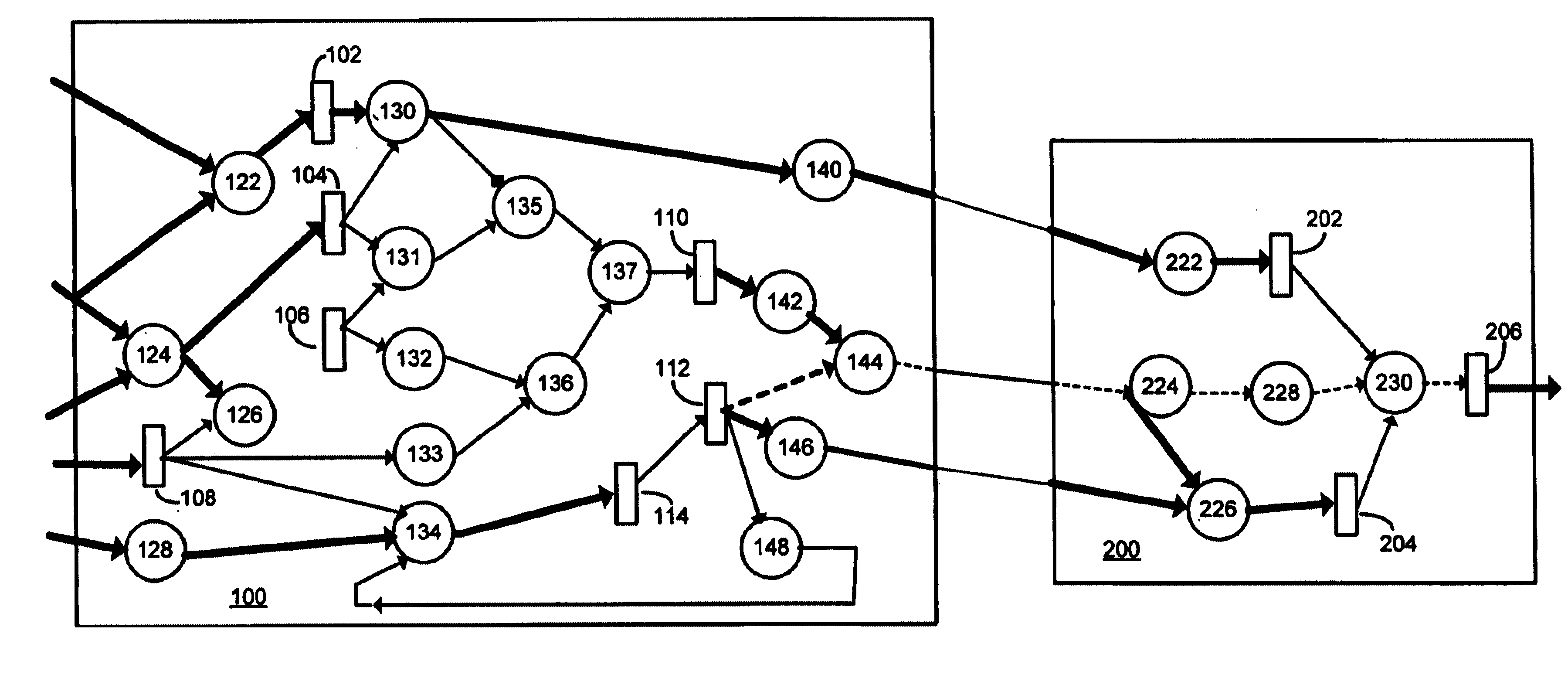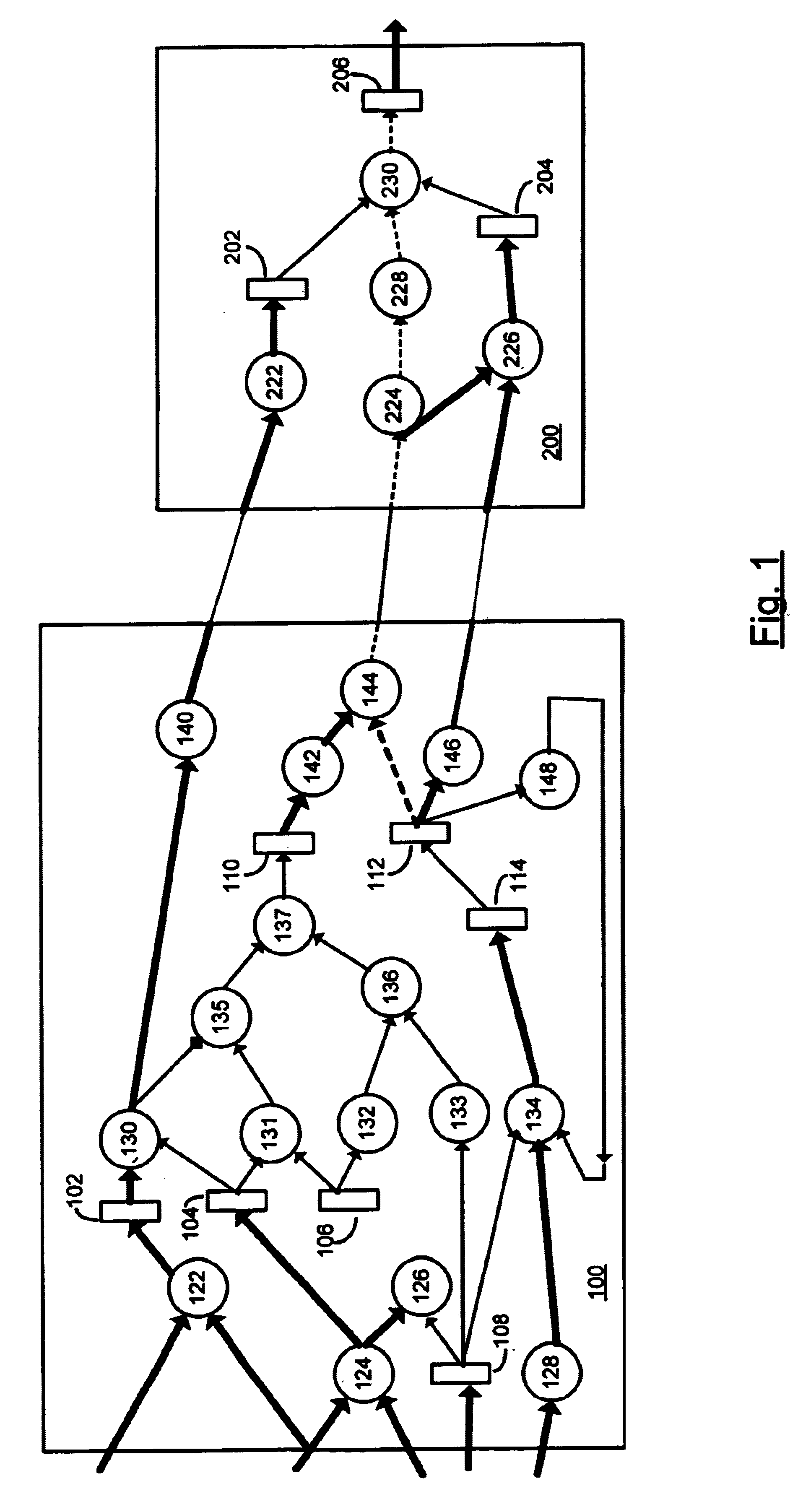Timing verification method employing dynamic abstraction in core/shell partitioning
a dynamic abstraction and core/shell partitioning technology, applied in computer aided design, program control, instruments, etc., can solve the problems of insufficient data, design will not work, and sequential timing optimization will be required more aggressively
- Summary
- Abstract
- Description
- Claims
- Application Information
AI Technical Summary
Problems solved by technology
Method used
Image
Examples
Embodiment Construction
The invention is based on the division of an entire chip design into a plurality of individual blocks and then division of each block into a core and shell structure.
There are two parts to the invention. The first part follows from the realization that the logic elements within each physical block can be partitioned into two sets: those that participate in global timing constraints and those that do not. This yields a partition of each physical block into a core (elements limited to interacting with local timing constraints) and shell (elements related to global timing constraints) as shown in the accompanying FIG. 1.
The decomposition of the chip into global and local timing constraints is achieved using the notions of Core Paths and Shell Paths. For the purposes of this disclosure, a tri-state gate is treated as to a combinational logic gate. The term memory element refers to a flip-flop, level-sensitive latch or RAM / ROM element. The input of a memory element includes both the cloc...
PUM
 Login to View More
Login to View More Abstract
Description
Claims
Application Information
 Login to View More
Login to View More - R&D
- Intellectual Property
- Life Sciences
- Materials
- Tech Scout
- Unparalleled Data Quality
- Higher Quality Content
- 60% Fewer Hallucinations
Browse by: Latest US Patents, China's latest patents, Technical Efficacy Thesaurus, Application Domain, Technology Topic, Popular Technical Reports.
© 2025 PatSnap. All rights reserved.Legal|Privacy policy|Modern Slavery Act Transparency Statement|Sitemap|About US| Contact US: help@patsnap.com


